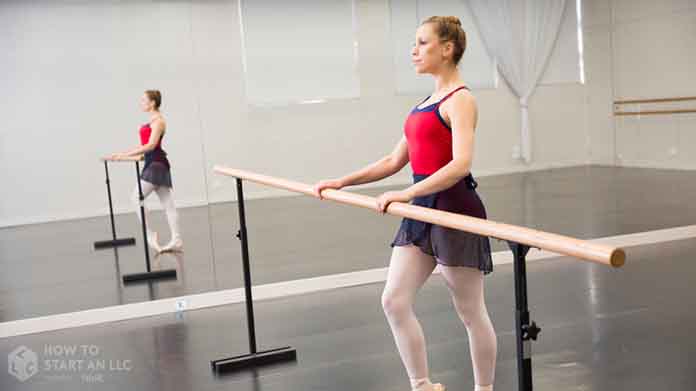The Dance Studio Purchasing Guide

Make smart decisions when purchasing equipment for your Dance Studio. Learn about the equipment you will need, typical costs, and where are the best places to buy it.
Most dance studio owners will need the following equipment to get started:
|
|
Keep in mind that the amount of each item you need will vary depending on how big your dance studio is. In addition, unless you are leasing or purchasing an exsting dance studio, the most significant cost when starting up is buying and installing the flooring.
Sample List of Purchases
A typical person looking to purchase equipment for a 40 x 30 ft. dance studio might be expected to make the following purchases:
|
|
Grand Total: $10,990
Dancing is a physically demanding sport. In order to reduce potential injuries and enhance performance of the dancers, good flooring is especially important in a dance studio.
Considerations When Choosing Your Floor
Before consulting with a flooring vendor, consider the following important aspects:
Shock Absorption
Dancing styles such as tap dancing, jazz, and ballet involves lots of feet movement. A shock absorbing floor will reduce impact on dancers’ knees and joints.
Sound Absorption
Dance lessons often involve loud music and body movements that create lots of noise. Flooring that reduces echo will prevent noise pollution and reduce likelihood of neighboring homes or businesses lodging noise complaints.
Scratch Resistance
A durable floor material is less susceptible to being scratched, particularly if your studio teaches dance styles that involve hard leather shoes or heels.
Non-Slip Flooring
Ideal flooring will provide dancers enough friction to keep them in place when spinning or rotating, while still allowing enough flexibility of movement.
Liquid-Resistance
Ideal dance studio flooring is not susceptible to damage in the event of spills and can be cleaned regularly.
Hard vs. Soft Flooring
Dance studios catering to social and ballroom dance where dancers wear shoes with heels require a harder surface than those designed for other types of dances such as ballet, hip hop, or jazz.
Flooring Options
In general, a sprung floor is what most dance school and dance studio use today. A sprung floor consists of a “sub floor” and a “performance surface.” For instance, a sprung wood floor, which uses real wood or engineered wood as the performance surface would be a great option especially for ballroom dancing, but it can be quite expensive (cost around $12--$20 per sf with installation). A few less costly alternatives include:
Laminated Flooring
- Pros: Decent scratch resistance, easy maintenance, does not require waxing or polishing, harder than vinyl, quieter and smoother than linoleum when you walk on it, higher resale value than linoleum
- Cons: slightly more slippery than a wooden floor, not completely waterproof
- Cost: $5-$12 per square foot (include installation)
Vinyl (aka “Marley floor”)
- Pros: Completely waterproof, cheap, easy maintenance, easy installation, but prone to cut and tear, resale value poor
- Cons: May release toxic by-products, especially after initial installations, check with manufacturers to make sure it’s low-emission and environmentally friendly. This type of flooring is also difficult to recycle.
- Cost: $4-$10 per square foot (including installation)
Note: Should be at least 5mm thick for dancing, also consider buying floor tape to attach the seams between to prevent slipping and tripping
Linoleum
- Pros: Longer lifespan than vinyl, very environmentally friendly, less toxic, renewable and recyclable.
- Cons: Not completely waterproof, sensitive to cleaners, difficult to install
- Cost: $3-$8 per square foot (including installation)
Here are some of the brand names in the dance flooring industry that you might want consider if you are trying to save time while looking for the best flooring for your studio.
One of the most famous types of vinyl floor is called “Matlay Dance Floor” by Alvas. You can find it on Amazon or Alvas (which also carries barres, mirrors). Rosco is another brand name in vinyl floor that carries subfloors and floor tapes. Halequin supplies both vinyl floor and sprung floor systems.
These brand names provide quality flooring with decent customer service, but are typically very expensive. However, it doesn’t hurt to consult the seller to see if certain products are on sale.
A few other cheaper but less renowned retailers include:
For a list of different retailers with comprehensive product descriptions see: Comprehensive Dance Studio Flooring Guide
Next Steps
Find out more about what goes into starting and running a dance studio
Protect your personal assets from unexpected legal claims. Consider structuring your business as an LLC.
Sign up at our Business Center to access useful tools for your business.